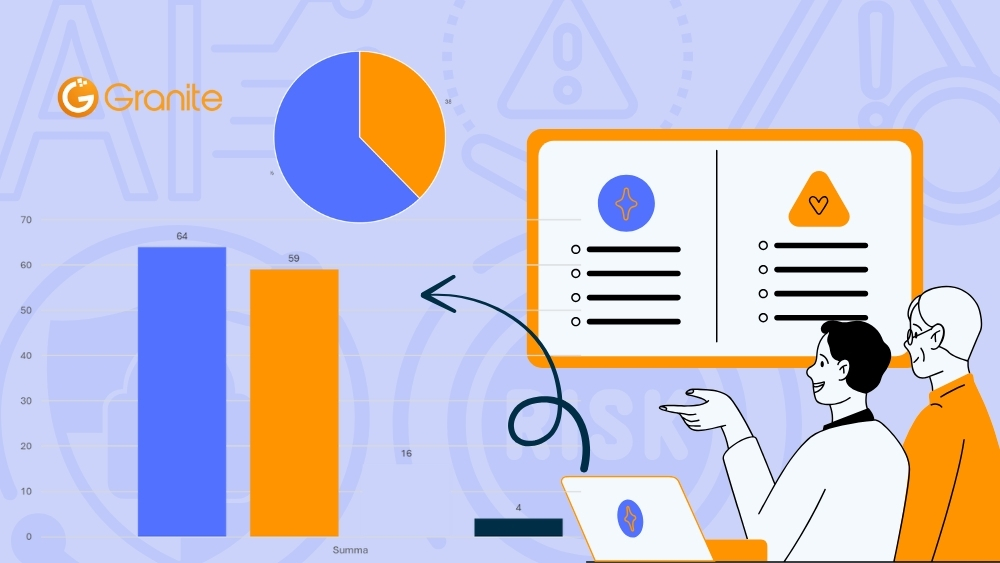Measuring risk management effectiveness requires organizations to establish clear metrics and frameworks that evaluate how well their risk processes identify, assess, control, and mitigate potential threats. An effective measurement system should track both process efficiency and outcome success, using quantitative and qualitative indicators. Companies with robust risk measurement frameworks can demonstrate risk reduction, improved decision-making, and enhanced business continuity. Moving beyond spreadsheets to specialized risk management platforms enables more accurate measurement through automated data collection, standardized assessments, and real-time visibility into key risk indicators.
Risk management effectiveness measurement
Risk management effectiveness measurement is the systematic evaluation of how well an organization’s risk management processes are performing against predetermined objectives. This assessment is crucial for governance as it demonstrates whether risk investments are delivering value and identifies areas needing improvement.
Organizations face several challenges when measuring risk effectiveness. Many struggle with selecting appropriate metrics that balance leading indicators (which predict future performance) with lagging indicators (which confirm past results). Others find it difficult to establish baseline measurements or gather consistent data across departments when using fragmented spreadsheet-based approaches.
The most common challenge involves connecting risk activities to tangible business outcomes. Without this connection, risk management can be viewed as a compliance exercise rather than a strategic function that protects and creates value.
What are the key metrics for measuring risk management effectiveness?
The most valuable metrics for measuring risk management effectiveness combine both process-oriented and outcome-based indicators. Key performance indicators should track how well the risk management system operates and what results it achieves.
Process metrics typically include:
- Risk identification rates (number of risks identified before materializing)
- Assessment completion rates and timeliness
- Control testing frequency and coverage
- Time to implement risk treatments
Outcome metrics often focus on:
- Reduction in risk exposure over time
- Incident occurrence rates and severity
- Financial impact of materialized risks
- Recovery time after disruptions
The most effective measurement approaches integrate both leading indicators that help predict future performance and lagging indicators that confirm whether past efforts have succeeded. This balanced view provides a more complete picture of risk management effectiveness.

Why is continuous monitoring important for risk management programs?
Continuous monitoring transforms risk management from a periodic assessment activity into an ongoing operational capability. This approach enables real-time visibility into emerging risks and control effectiveness, allowing organizations to respond more quickly to changing circumstances.
The benefits of continuous monitoring include:
- Earlier detection of emerging risks and trends
- More timely adjustments to risk controls and treatments
- Reduced impact of risk events through faster response
- Improved confidence in decision-making with current information
- Enhanced compliance with regulatory requirements
Automation plays a crucial role in enabling continuous monitoring by eliminating the manual effort of data collection and analysis. Purpose-built risk management platforms can automatically track key risk indicators, send alerts when thresholds are breached, and generate updated reports without manual intervention.
Key takeaways for improving your risk management measurement
Effective risk management measurement requires a systematic approach that connects risk activities to business outcomes. Organizations should focus on developing a balanced set of metrics that provide meaningful insights rather than simply generating data.
To enhance your measurement capabilities:
- Move beyond spreadsheets to specialized GRC platforms that provide structured assessment templates and automated reporting
- Implement dashboards that visualize risk trends and highlight areas requiring attention
- Integrate risk data from across the organization to create a comprehensive view
- Schedule regular reviews of measurement effectiveness and adjust metrics as needed
- Ensure measurement results inform strategic decisions and resource allocation
We find that organizations achieving the greatest success are those that view measurement not as a compliance exercise but as a tool for continuous improvement. By establishing clear metrics, implementing automated monitoring, and regularly reviewing results, companies can transform risk management from a cost center into a strategic advantage.
